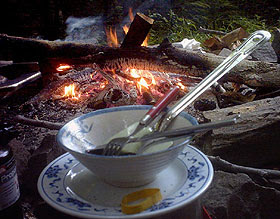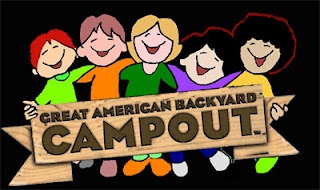You've probably read about the "contaminated pet food" debacle that's been in the news for a couple of weeks. It began with the death of some family pets who had eaten pet food accidentally laced with an industrial chemical, melamine.
Then the plot began to thicken. Late last week it was discovered that 6,000 hogs across the country ate the chemically-contaminated pet food too. And some consumers in California consumed the toxified hogs. Although, the FDA rushed to say, the hogs' flesh probably did not contain enough melamine to be harmful to the humans who ate the hogs. Of course.
Yesterday, there were more developments in the widening scandal. Now, says the FDA, we know that at least 2.5 million broiler chickens ate the melamine-laden pet food as well and were subsequently sold at fresh meat counters across the country. The FDA's chief medical officer, David Acheson, maintained yesterday that there is no "significant threat of human illness from this." Well.
I am very sorry for any families who have recently lost pets due to melamine in the pet's food. I am sorry too for any families who may be fearful for their own health after eating contaminated chicken and pork.
I might say that I'm sorry for the tainted livestock that will be killed and not eaten, rather than killed and eaten. But from the livestock's perspective, what's the difference?
I could say that I'm sorry for the farmers who have raised the contaminated hogs or chickens that will now be destroyed and not sold for meat. But.... farmers do not own the hogs or chickens they raise. In the U.S. 99% of poultry and 80% of hogs are raised in warehouses on factory farms. The company that packages the meat owns the animals throughout their life cycle, e.g. Tyson owns all the 24,000 chickens in a single broiler shed. Tyson also provides all the feed. The farmer owns the land and the warehouse-like buildings on his property. So I presume that Tyson (or Perdue or whatever corporation owned the tainted broiler farms) will take the hit for the loss of the animals. I'm glad for that much of the story. Tyson deserves it. Likewise, Smithfield or some other giant meat corporation owns all the hogs on any factory farm. Smithfield will take the hit if their hogs must be destroyed. I'm glad for that too. For that reason, I hope the scandal grows and grows. I hope every factory-farmed animal in the country turns out to be laden with melamine, and Tyson and Smithfield and their cronies go belly-up.
That's unlikely.
But what might really happen is this: we might start a national dialogue about what's in the feed that our livestock eat. As environmentalist- rancher Nicolette Niman said so aptly in her essay for our book "We are what
they eat."
We researched the topic of livestock diets thoroughly for Veggie Revolution, and even more thoroughly for our next book (Going Green: A Wise Consumer's Guide to a Shrinking Planet, 2008). We interviewed feedlot specialists at midwestern universities, scientists with the National Chicken Council, food scientists at NCSU, a Tyson plant manager, dairymen, etc.
Here's what we discovered. There is almost no regulation on what can be fed to livestock. That's because the meat industry is extremely rich and powerful, and their lobbyists get what they want in Washington. And what they want is license to feed their animals the cheapest possible substance that will enhance their growth in the short term. It's all about shaving pennies off production costs.
Because transport adds to the cost, livestock are fed whatever is cheapest
locally. For example, cattle in Texas are fed chicken feathers, chicken feces, and chicken-slaughterhouse scraps - because Texas has a lot of cattle feedlots
and a lot of factory farms that raise chickens. Feedlot cattle used to be fed
cattle-slaughterhouse scraps too, but that has been stopped due to the threat of mad-cow disease which is transmitted when cows eat other cows. But...oddly....cattle feedlots are still allowed to feed bovine-blood products to other cattle.
And (this was told to me by a PhD who advises feedlots on their feeding regimen) , the chicken feces that is fed to cattle in feedlots almost certainly contains cattle tissue. That's because the
chickens have been eating cattle slaughterhouse waste! And some of the beef scraps pass through the chickens unaltered, in addition to the spillage from the chicken-feeding tray which mixes in with the chicken feces on the floor. It's all scooped up together and added to the chow at cattle feedlots.
See? It's ugly. I believe the public would be appalled if livestock diets were posted in grocery stores. Or if pictures of the conditions the animals are raised in were posted. I've been there, and I was stunned. The photos we took are in Veggie Revolution.
What can you do?1. Write your legislators and supermarket managers and ask for labeling on all animal products stating what the animals were fed. Demand transparency and accountability in farming, especially livestock farming. Ask your legislators and supermarket managers to stop the deceptive marketing that pervades our meat industry. (Take a look at the bucolic meadow of happy animals over the meat counter at Harris Teeter.)
2. If you consume animal products, look at farmers markets or natural food stores for products from grass-fed animals, or look for certified organic products.
3. Eat fewer animal products. Even one or two meatless meals a week helps. Americans consume on the average 248 lbs of meat per year per person, way more than citizens of any other country, including Western Europe and Australia and other industrialized nations. The average amount of meat in developing nations is 66 lbs per person per year. If we as Americans didn't eat so much meat, we could come closer to meeting the demand with grass-fed and pastured animals .
4. Ask around at a local farmers market and locate a small farm near you that uses sustainable, healthful, and humane methods to raise livestock and produce animal products. In NC, you can find dozens of such farms in the annual "Food Guide" available for free from the Carolina Farm Stewardship Association (google for contact info). Visit one of these sustainable farms, and talk to the farmer about how his or her methods differ from the standard corporate methods on factory farms. You'll be moved - I guarantee it.
5. Support and get involved with activist groups such as the Grace Factory Farming Project or the Waterkeeper Alliance that are working hard to hold meat corporations accountable for their abuses to our environment, non-unionized laborers, and captive animals. Or better yet, find a group that's active in your own community.
Keywords:: melamine contaminated pet food tainted pet food feedlots mad cow slaugherhouse waste scraps livestock feed sustainable farming
 Will it capture half the market? Not likely,
Will it capture half the market? Not likely,









